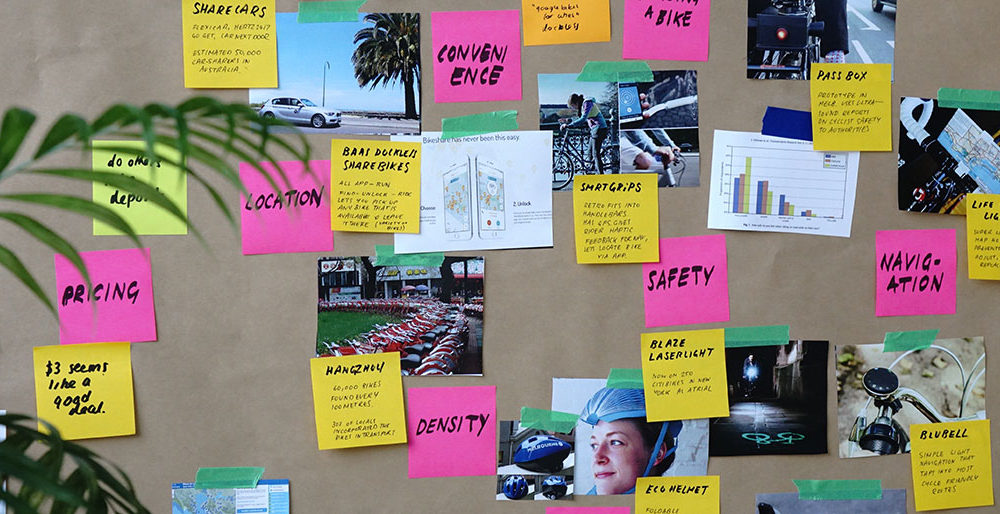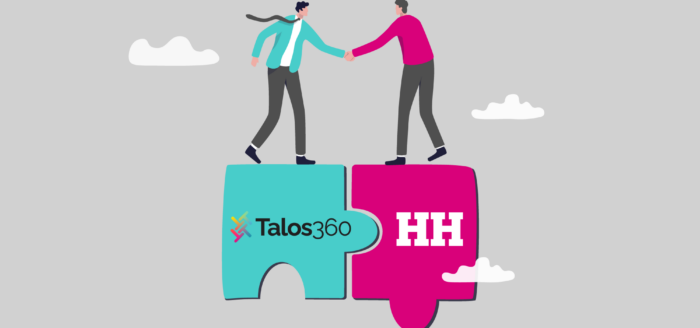
If you’ve been following our articles on designing the future of recruitment, you’ll know that so far we’ve aligned the team around our objective.
At the center of any good strategy lies an accurate, understandable diagnosis of the problem at hand. User research, particularly ethnographic research is a powerful way of obtaining this diagnosis, and combined with a design-thinking approach can convert this diagnosis into proven, actionable outcomes.
A good diagnosis simplifies the often overwhelming complexity of reality by identifying certain aspects of the situation as critical.” – Richard Rumelt
Before diving in, it was important to understand that Hiring Hub is a multi-sided marketplace. This affected how we approached the research in terms of what it was that we needed to understand in order satisfy both parties — employers and recruitment agencies — involved in each transaction.
Sean Silverthorne from Harvard Business School frames this approach well:
Most markets are one-sided in nature—customers interested in buying running shoes, for example. But a multi-sided market involves more players—and each has its own interests to be served.
Multi-sided markets are also interdependent. Hagiu, an assistant professor at Harvard Business School, defines these multi-sided markets as platforms that serve two or more distinct groups of customers who value each other’s participation.
For example: eBay provides markets for both buyers and sellers, dating club clients are both men and women, shopping malls serve both retailers and shoppers, and operating system companies need both end-users and application developers.
So who are the players involved in our recruitment marketplace?

Icons by Yu Luck, Anastasia Latysheva and Icon Fair from the Noun Project
From our kick-off session we had already defined who these players were in our multi-sided market and had started to understand what their independent interests were that we needed to serve.
It felt like a good place to start was talking to groups of people we’d defined as Agents and Employers. What were the challenges they faced in their roles? What were they trying to achieve and how were we helping or hindering them?
So over the next two weeks we did just that. Here’s what we found.
Learning from Recruitment Agencies
We spoke to a wide range of agents from across the country. Some operated individually and specialised in very niche areas/roles, others worked in small teams.
We synthesised our findings from the Agents into three main themes:
- Developing relationships
- Growing my business
- Usability issues with the current platform
Recruitment is a people business. Everything revolves around relationships. Between candidate and agent, between agent and employers. One of the core areas the product was under serving was the facilitation of prompt feedback on candidates and communication between agents and employers. This was significant as it was where Agents felt they could add value beyond simply filling roles. Things such as: educating the client on the current market for that role in their location, the salary expectations of candidates, and the average time to hire.
“There is no relationship – unless you’re putting bums on seats, you can’t add any value.”
Additionally, Agents were often self-employed, entrepreneurial people who were also trying to develop and grow their own businesses. One of the key things that they liked about Hiring Hub was from a new business development perspective. There were a few challenges here, the main one being the limited visibility going into an opportunity before committing. Another interesting challenge to solve!
Learning from the Employers
We spoke with a range of Employers from smaller companies, through to SMEs and very large multinational corporations. As expected, their needs and concerns differed depending on how their internal process and structure was set up.
We synthesised our findings from Employers into the following themes:
- Managing the candidate pipeline
- Communicating culture and roles
- Triggers and usability
One of the biggest issues employers were facing was managing the number of candidates in their pipeline at volume. This was leading to mistakes being made, which was reflecting badly on all parties involved. The recruitment experience has a huge impact on the brand of a company. With the proliferation of social media and sites like Glassdoor, negative experiences are now shared and can be incredibly damaging in the long run for businesses.
“They [agencies] just want to get you on the phone and talk for ages – I don’t have time.”
Another finding was that HR Managers and Hiring Teams are very time poor. In contrast to our discovery with Agents, Employers were struggling to find time for feedback and (often repeated) communication with multiple, individual Agents. These pressures, combined with a challenging interface and architecture of the platform, was resulting in this not happening and creating the feeling of isolation observed in Agents.
Conclusions
It was becoming apparent where the tensions were in the product and what the impact of those tensions were on scaling the marketplace. Additionally, trust seemed like a central component. The relationship between Agent and Employer was damaged from employers’ previous experiences using recruitment agencies.
It felt like we had a good enough understanding of the problems we faced and ideas were beginning to form. We knew the overall impact that we wanted to have from our kick-off session, and we now had an idea of the things that were potentially affecting us achieving that desired impact.
There was a lot we could experiment with here. Our burgeoning development team can only build so much at any one time, though. The next challenge was to begin prioritising where to focus our efforts and formulate some kind of plan…


